As the bus carrying the U.S. National Team rolled through the streets of Rome heading to meet Italy in its second World Cup match on June 14, 1990, defender Desmond Armstrong was transfixed on the street sights.
"The streets are packed," he said. "Italy is one of the favorites to win and Serie A at that time was the top league in the world. And here we are, the lowly Americans, we just got our butts beat 5-1 by Czechoslovakia. I see people putting up both hands. It looks like they're waving. So, I wave back with one hand and they keep putting up two hands.
"Our interpreter says, 'Do you know what they're doing?'"
"I said, 'They're waving.' "
"They're not waving. They're saying they're going to beat you 10-0 and you keep waving back, no, it's going to be five."
Thirty years later, Armstrong can laugh about that episode.
WATCH: Young USA Squad Prepares for First World Cup in 40 Years at Italia ‘90
At the time, there wasn't much for the Americans to laugh about because after the USA stumbled an utterly forgettable debut at Italia 90.
Four days prior, the U.S. players had just gotten their collective heads handed to them in their first World Cup confrontation in four decades.
Coach Bob Gansler and assistant coaches Joe Machnik and Ralph Perez picked a young team for Italia ’90; in fact, the youngest of the 24 finalists. The Americans averaged 24 years, 26 days. Veterans such as former New York Cosmos midfielder Ricky Davis, an ex-captain, and Hugo Perez, who is one of the most creative players to wear the Red, White and Blue, were recuperating from injuries and were left off. There were rumors that Gansler didn't want Davis on the team because he had feared other players would go to him rather than the coach. Gansler denied them, claiming he selected the 22 best players that could help the squad.
|
USMNT FIFA World Cup Roster Average Age/Average Caps |
||
|
Year |
Average Age |
Average Caps |
|
1990 |
24 years, 26 days |
21 |
|
1994 |
26 years, 292 days |
41 |
|
1998 |
28 years, 303 days |
52 |
|
2002 |
28 years, 283 days |
52 |
|
2006 |
28 years, 241 days |
45 |
|
2010 |
27 years, 101 days |
35 |
|
2014 |
27 years, 301 days |
35 |
As Gansler - along with fans, media and players around the game in the U.S. – learned, a national team coach could be damned if he did and damned if he didn't.
"He did it the right way," forward Bruce Murray said. "He got criticized. He got roasted for that for [not picking] the old guard, the old NASL guys, the indoor guys. But quite frankly, fitness would have been an issue with some. We had guys that helped us [in qualifying], like Kevin Crow and Chico Borja, but it was time to get those young legs out there.”
Two of the three USA goalkeepers were 21-year-old Tony Meola, who started all three matches, and 20-year-old Kasey Keller. They might be the youngest World Cup goalkeeping tandem ever.
Experience was a huge factor. Except for Paul Caligiuri (SV Meppen, Germany), Peter Vermes (FC Volendam, Netherlands) and Chris Sullivan (Győri ETO FC, Hungary), none of the U.S. players had performed overseas. There was no first division in the states; MLS was six years away. Many called home various leagues of the time -- the American Soccer League, the Western Soccer League, Major Indoor Soccer League (Armstrong and Jimmy Banks) and even amateur clubs (team captain and cap-leader Mike Windischmann played for the semi-pro Brooklyn Italians). There even were college-age players (Eric Wynalda, Chris Henderson).
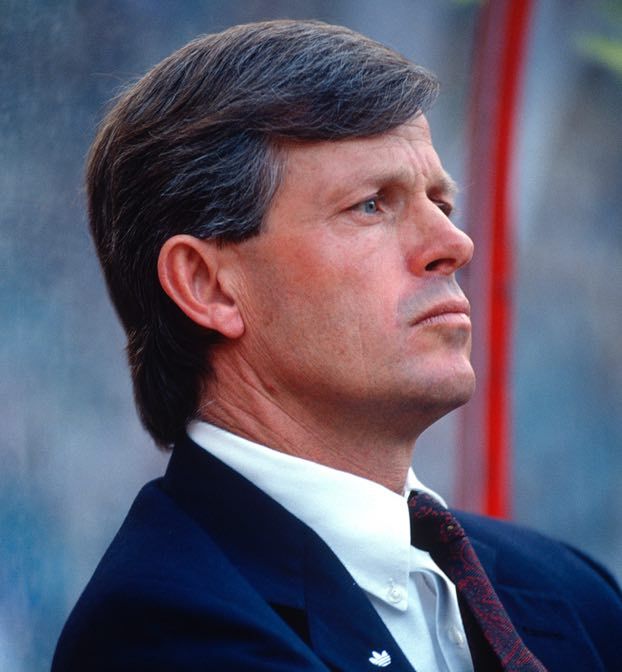
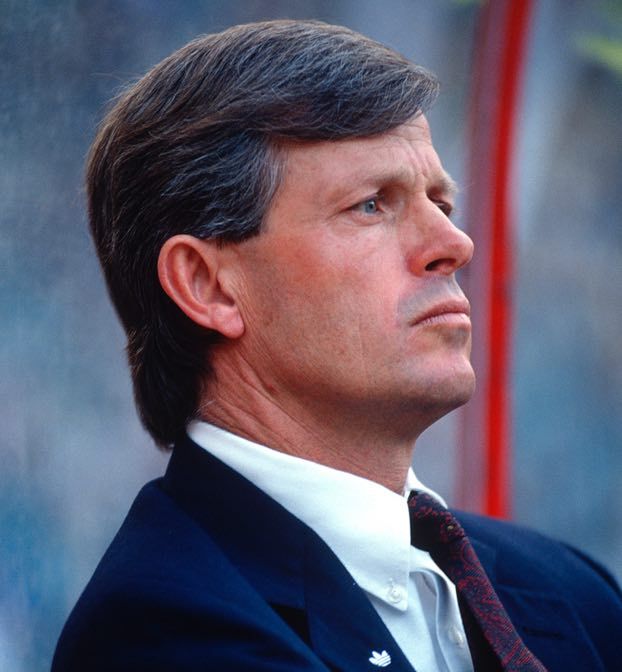
So, it should have been little surprise the USMNT were 500-1 longshots to win the tournament.
A day before the opener, Gansler was introduced to the international media’s reporting of rumors, half-truths and non-truths. The International Herald Tribune ran a small story on its front page from the French News Agency that Gansler would resign after the competition. When asked at a press conference if he was concerned about his future with the team, Gansler responded: "Let me elaborate on that. No."
Regardless of the game's outcome, one thing was certain at Stadio Comunale in Florence on June 10: the USMNT never played under such a microscope. Some 726 reporters, 417 radio and TV commentators and 100 photographers were expected.
Scouting reports said that the USA would be able to stay with the Czechs. Then the teams lined up in the tunnel prior to the walk out.
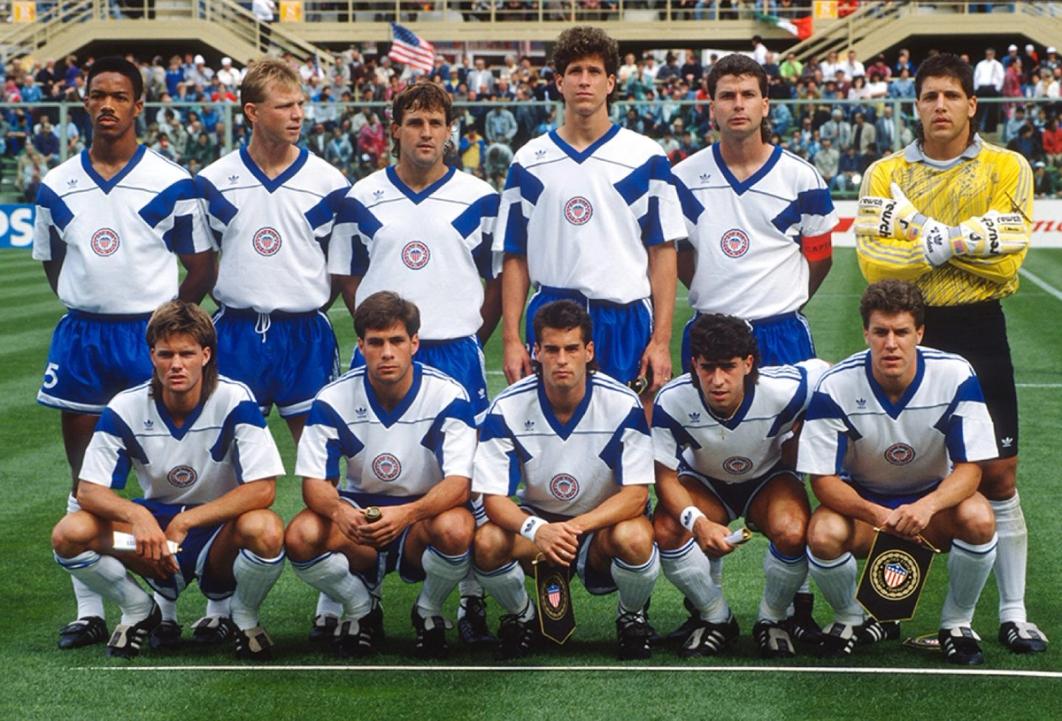
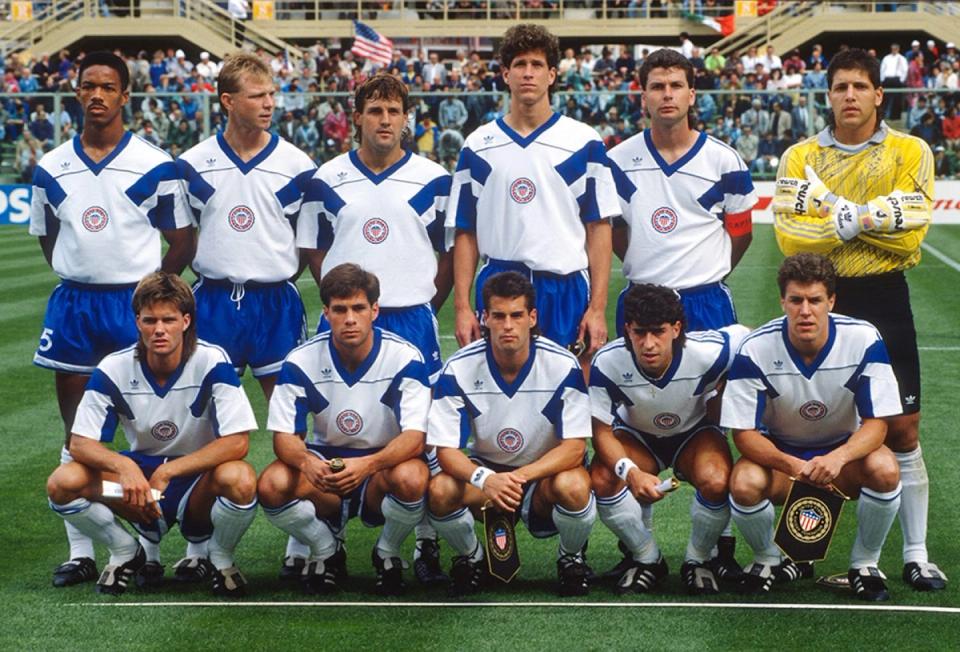
"I'm looking up at [Tomas] Skuhravy, the guy’s like 6-6," said Murray, who’s no slouch at 6-1. "I mean, the center backs, they're all 6-4 and I'm like, 'You've got to be kidding me, right?' "
Added Balboa: "It's not like we had a lot of professional guys on the field, true professionals playing in Europe and South America. We were a bunch of college kids [in] the World Cup. The Czechs showed us we were not ready to play against a team like that."
The 5-1 defeat exposed the Americans’ weaknesses. They were slow. They lacked a physical presence. And they showed their inexperience in soccer savvy.
"It was a beating," Murray said. "Men against boys."
They were outshot, 23-7.
Early on, the Czechs probed the defense for soft spots and weaknesses. In the 25th minute, they went into high gear when midfielder Lubos Kubik, a vital member of the Chicago Fire's 1998 MLS Cup and U.S. Open Cup double-winning side, raced through the midfield and crossed the ball to Skuhravy, who beat Meola from 12 yards.
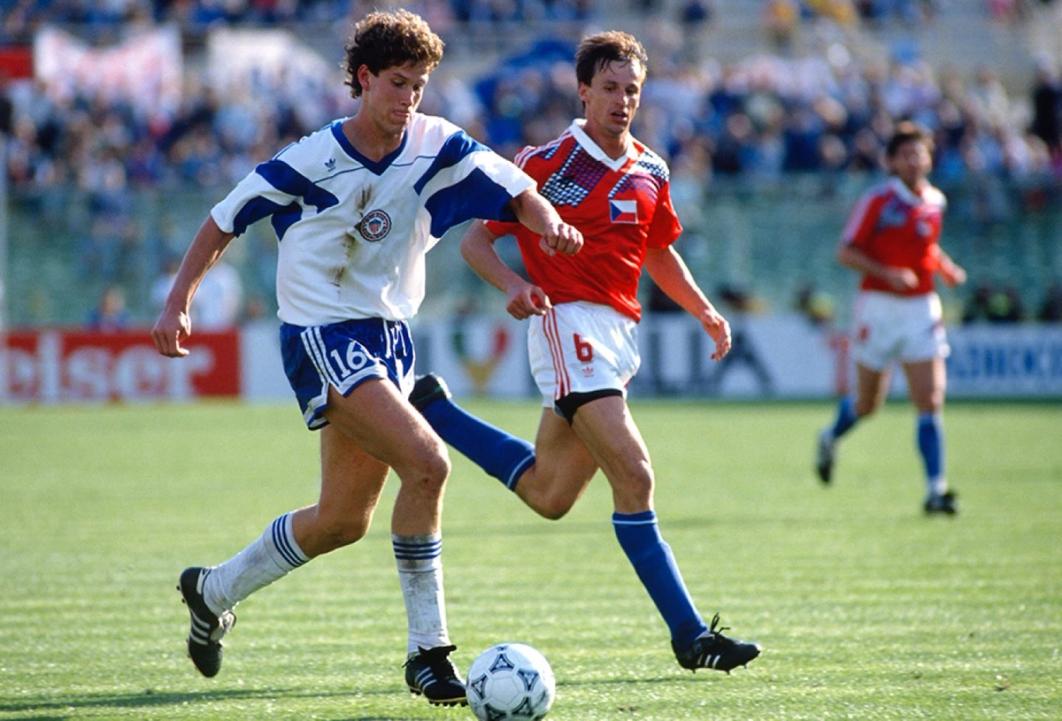
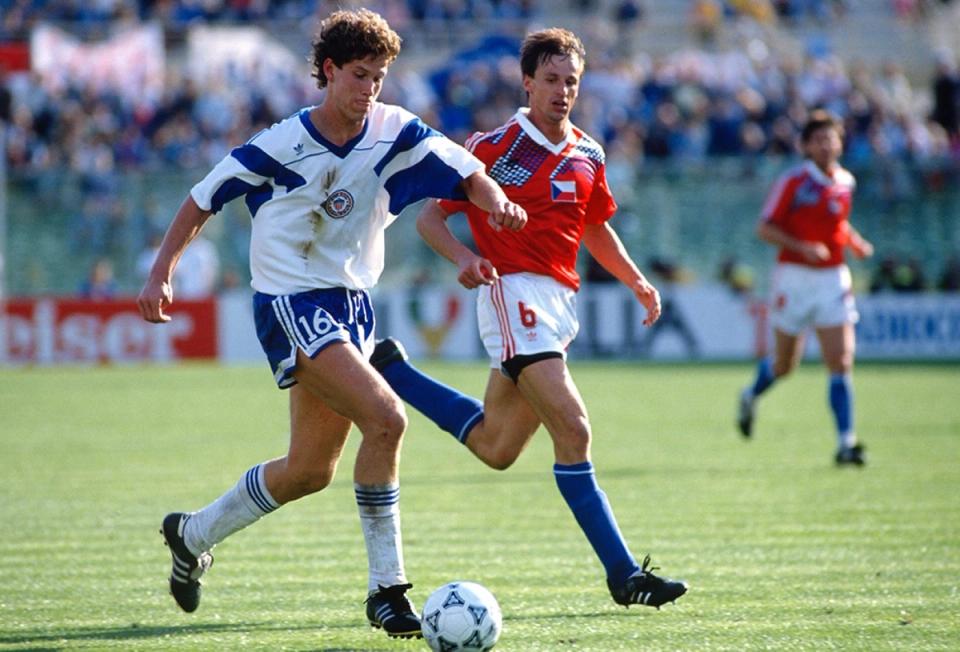
Steve Trittschuh's inability to clear the ball out of the area led to the second goal. Windischmann got possession and lost it to Ivan Hasek, whom he tripped while reaching for the ball. On the penalty kick, Meola guessed correctly, diving to his right, but Michel Bilek powered it into the upper corner for a two-goal lead.
In the 51st minute, Hasek headed home Frantisek Straka's corner kick while U.S. defenders played statues, standing around as spectators.
Two minutes later, Wynalda was awarded a red card for retaliating against midfielder Lubomir Moracik, who had stepped on his foot, becoming the first U.S. player to be ejected from a World Cup match.
"It's called paying your dues," Gansler said. "Eric got baited. No. 11 stepped on his foot and he pushed back. And a lot of times the first foul is not seen. It's a matter of inexperience."
Playing a man down, Caligiuri raced down the right wing, eluded two defenders, and pulled goalkeeper Jan Stejskal out of the net to score from 12 yards in the 61st minute. It was the USA’s first World Cup goal since John Souza tallied in a 5-2 loss to Chile in Recife, Brazil on July 2, 1950.
"At 3-0, you have to take risks," Caligiuri said.
Skuhravy headed in his second goal in the 79th minute, and substitute Milan Luhovy closed out the scoring two minutes into injury time.
Sandwiched between those two goals was a penalty kick awarded after midfielder John Harkes tripped a player in the box. Bilek, trying to embarrass the U.S. by chipping it into the upper right corner. Meola caught it in mid-air.
"He was trying to get too cute," Meola said. "That'll teach him."
HIGHLIGHTS: Czechoslovakia 5, USA 1 | 1990 FIFA World Cup
Several minutes later, referee Kurt Roethlisberger of Switzerland mercifully whistled an end. "The most frustrating thing is we made all the oddsmakers look like kings," Meola said.
"It kind of put us where we belonged," Ramos said. "We were basically amateur players playing against full pros. I can only compare it to an American middle of the table basketball team having to play in the NBA.
"The speed of play of the Czechs was something that we had never experienced before. They had players that were truly monsters. They were a huge team and were incredibly fast."
His teammates agreed.
"We went in a little naive tactically," Harkes said. "They exploited us a little bit. We learned a quick lesson in that World Cup. That's normal for all teams, especially young teams, getting the first time back after 40 years."


Team captain Windischmann (above) couldn't commiserate with his teammates. "I had to take a drug test," he said. "We're going into the locker room. 'Oh, come with us.' Disappointment."
The team needed to regroup for Italy. "It could have been a disaster if we didn't get our act together," Windischmann said.
In its opener, Italy recorded a 1-0 win against Austria on a strike by second-half sub Salvatore Schillaci, who would go on to win the tournament’s Golden Boot with six goals. Another forward, Gianluca Vialli, who survived several brutal kicks by the Austrians, was fearful of similar treatment by the Americans.
"They were killing Vialli, just crushing him," Armstrong said. "Right before the game started, he saw me line up matched against him on the opposite side for the kickoff and he was motioning, 'Are we going to play or are you going to hack me?' I motioned back. I pointed to the ball, and he says ok. Then everything was cool. We actually exchanged jerseys after the game. Pretty cool gesture."
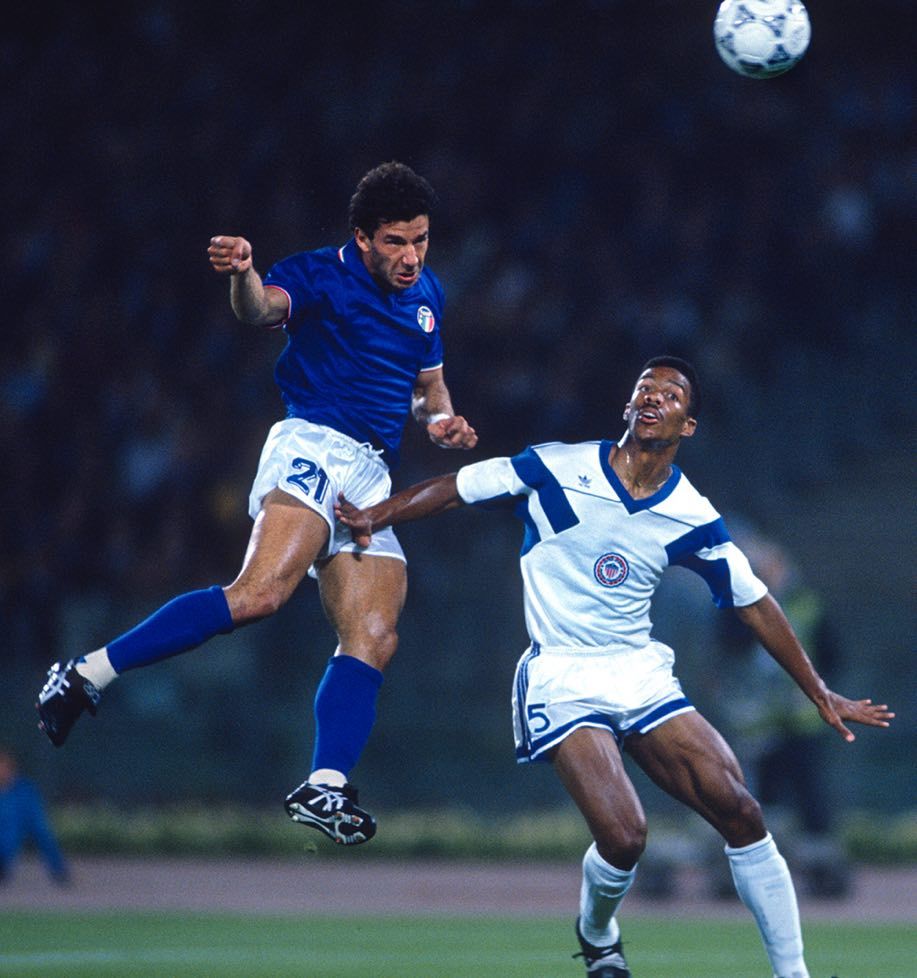
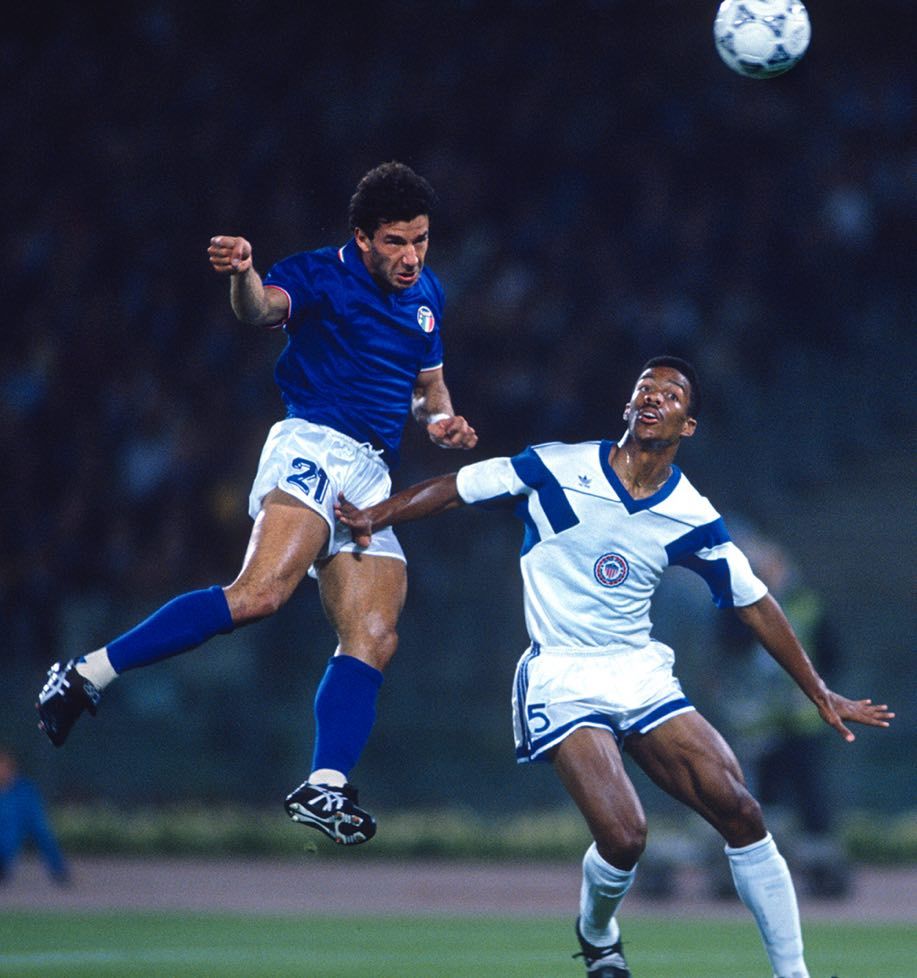
Armstrong marked Vialli in the first half and Schillaci in the second. "Neither one of them scored, praise God," he said. “That solidified a bit of a reputation for me because I marked quote and unquoted the best strikers for Italy at the time and none of them scored."
Given the Czech results, journalists wrote about the possibility of a modern-day version of the Christians vs. the Lions in a Rome arena, Estadio Olimpico (five miles away from the Colosseum).
Gansler made three changes, benching Trittschuh and John Stollmeyer and unable to use Wynalda (red card) for John Doyle, Jimmy Banks and Balboa.
Among those disappointed with the Czech match was 22-year-old Balboa, the former U-20 USMNT captain who had just finished his collegiate career at San Diego State the previous fall. The young defender had played in three of the USA’s eight final round qualifying matches the previous year, but none down the stretch. After regaining playing time at the beginning of 1990, Balboa hoped to start in the opening match, but Gansler explained why.
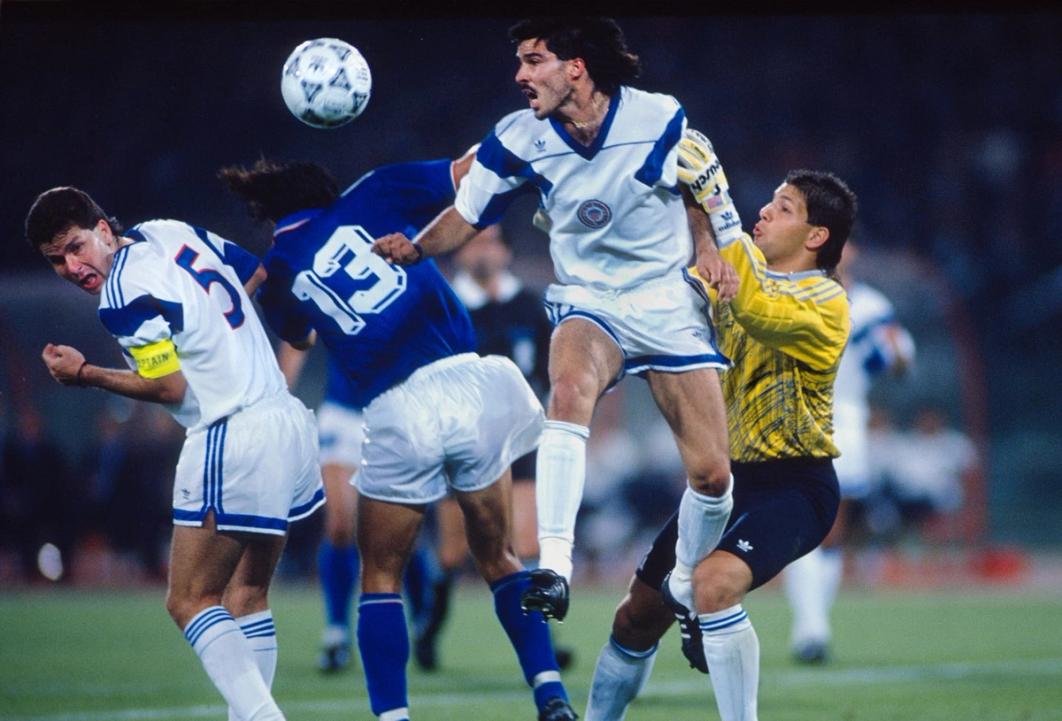
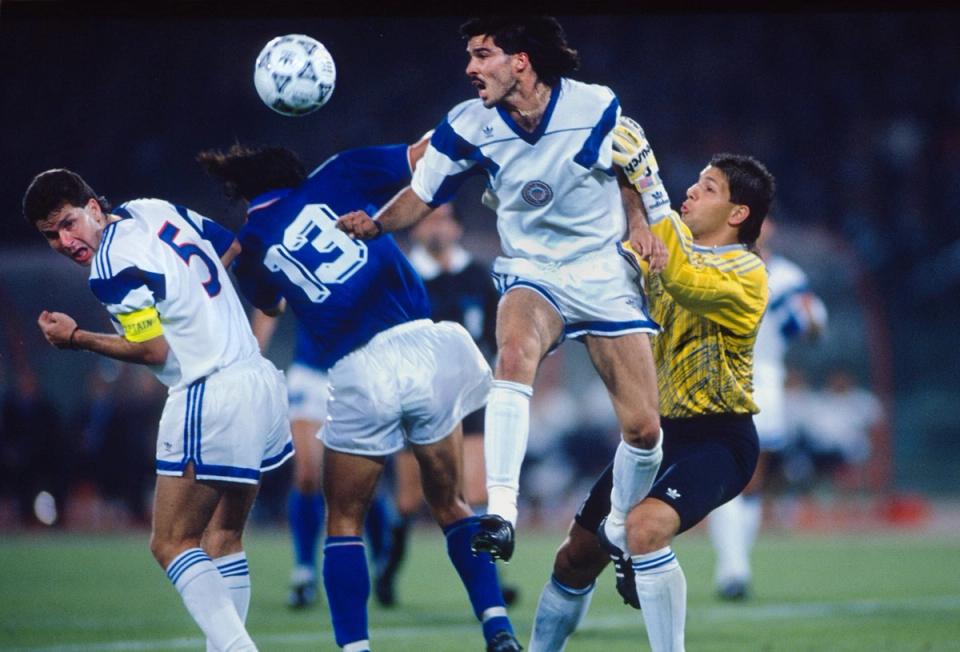
"He said to me, 'Listen, we haven't qualified in 40 years. I'm going to play the players who helped us get here. They deserve to be on the field in that very first World Cup game,' " Balboa said. "I didn't like it one bit, but I respected it because he was right. Those players before I got there had worked their ass off to take this team from when no one knew it and helped it qualify."
The USA held its own. In one sequence the Americans put together two dozen passes in succession, prompting the pro-Italian crowd of 73,423 to turn on its heroes. By the final whistle of the hosts’ 1-0 victory, the crowd still was whistling against the Italians' disappointing performance and poor finishing despite Giuseppe Giannini's 12th-minute goal.
The Americans had one opportunity at destiny -- in the 68th minute Vialli's 34th-minute penalty rang off the post -- when midfielder Riccardo Ferri was awarded a yellow card for elbowing Murray 22 yards out.
Murray launched a free kick that deflected off a diving goalkeeper Walter Zenga’s rear end. The ball came to Vermes, who launched a shot that Zenga saved. The ball squirted loose before Ferri cleared it.
WATCH: Vermes Talks Through Chance vs. Italy in 1990
"That ball had so much dip on it,” Murray said. “I can't believe Zenga got down. He started so late because it came over the end of the wall. Peter did everything right. Would we have been deserving? No. Would have Peter Vermes played with some lesser club in Italy? Yes, and he would have had a nice contract. It was a moral victory. This was big boy soccer, but it was respect."
Gansler was encouraged. "You might call me a blooming optimist, but we tried for a point tonight," he said. "We showed our real face tonight."
Afterwards, the Americans had surprise locker room visitors.
"It's just amazing," Murray said. “The whole Italian team comes in to give a little speech on how we should be proud of our country, what we did to represent ourselves. They wanted to trade jerseys ... There were beers. It was the weirdest thing. I swear to God I've never been in that situation. I've never had another team walk into the locker room. To put more chaos into it, [former middle weight boxing champion] Marvin Hagler shows up in the locker room because he's making Italian films there."
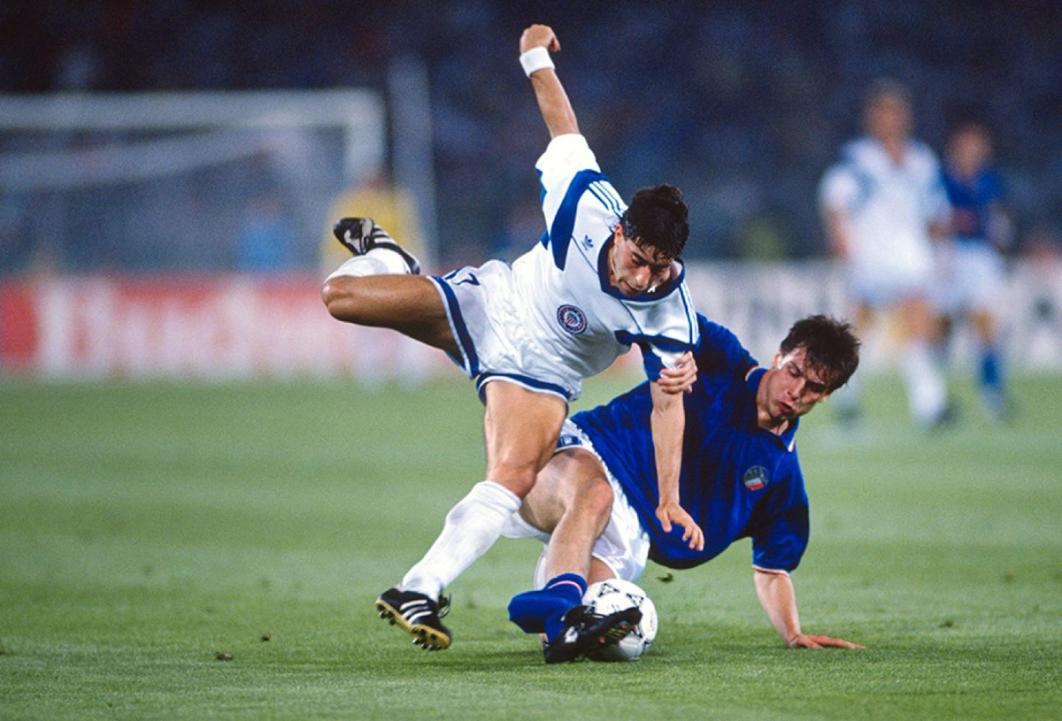
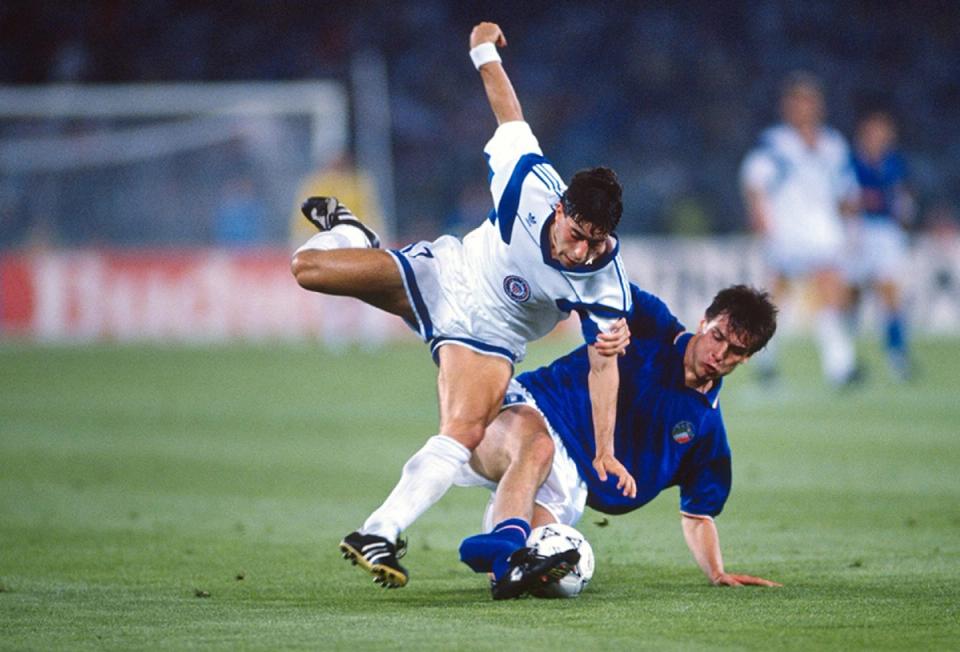
Ramos (above), who played in many memorable matches for club and country, realized how special it was.
"If I could go back to one game in my career that I could play again, it would be Italy in Rome because who gets that opportunity to play against Italy in Rome in a World Cup game?” he said. “That's as good as it gets."
Though the Americans lost twice, they still had a longshot chance of advancing as one of the best third-place teams, though a convoluted series of results were necessary. Entering the June 19 encounter against Austria (0-2-0, no goals, two against), the U.S. had a minus-five goal differential.
* The USA needed to defeat Austria, 5-0, bringing its goal differential to zero
* West Germany needed to beat Colombia
* Brazil had to register a win against Scotland
* Sweden needed to best Costa Rica, but not by more than one goal
* South Korea had to play Uruguay to a draw
* Both the England-Egypt and Ireland-Netherlands matches needed to have winners and no draws
The Americans couldn't seal their end of the bargain in a physical affair in which Syrian referee Jemal Al-Sharif handed out a red card and nine yellows in a 2-1 defeat before 34,857 at Stadio Comunale in Florence.
"We had a certain swagger about us, a belief because of the result against Italy," Harkes said. "It's natural. You start to think, 'Ok, we've got this.' Again, we fell short there."
In the 33rd minute, defender Paul Artner was dismissed for kicking Vermes (below) at midfield, giving the USMNT a man advantage for the rest of the game.
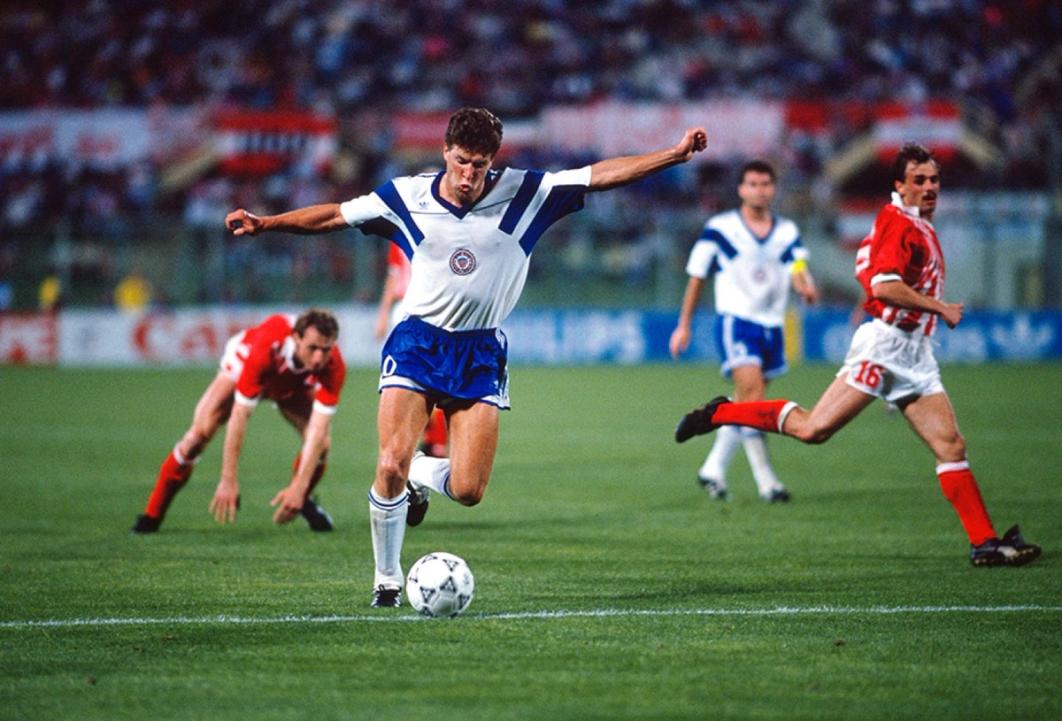
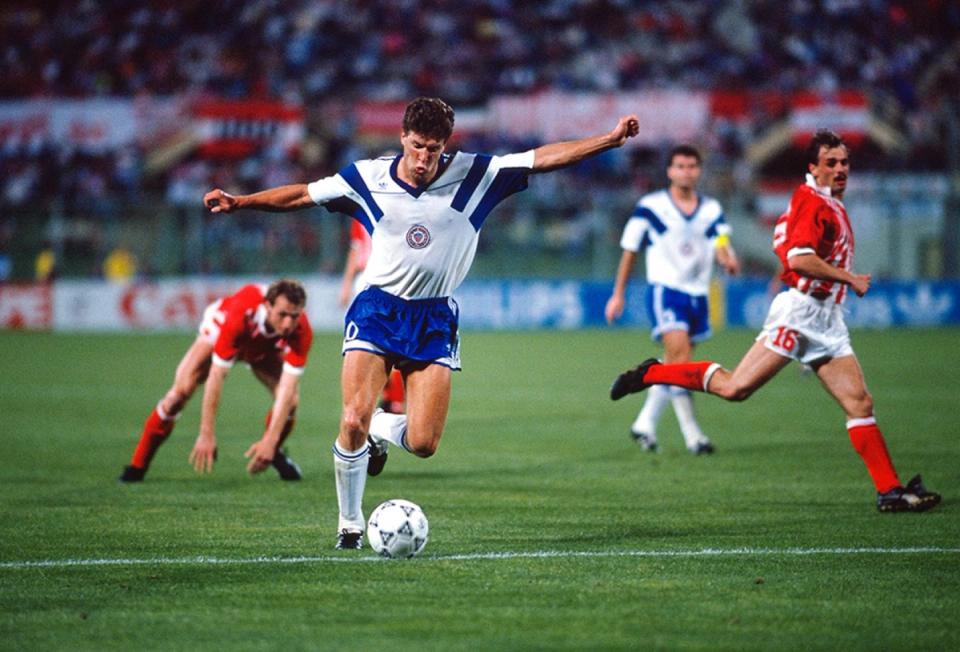
Five minutes into the second half, the U.S. came unwound. Austrian forward Andreas Ogris picked up a loose ball after a corner kick and outran several defenders before beating Meola with a 12-yard shot. Austria utilized a counterattack on its second goal. Ogris raced down the right side and crossed the ball to Gerhard Rodax, who scored from 10 yards.
Murray pulled one back in the 83rd minute, placing the ball through goalkeeper Klaus Lindenberger's legs from 10 yards.
"It wasn't the best goal," Murray said. "Geez, it was terrible. Tab cut behind two defenders and it was an easy goal. My training was playing the percentages, which was to slot it low and of course it hit the goalkeeper's legs and went in. It's a mucker's goal. If you watch the celebration, there isn't any. I'm sprinting back. I want the ball back. We could still tie this game or win it.”
The match was significant for midfielder Brian Bliss, who made his World Cup debut, replacing Caligiuri in the 70th. After starting seven of eight qualifiers – including the clinching win at Trinidad & Tobago the previous November – Bliss lost his starting position.
HIGHLIGHTS: Austria 2, USMNT 1 | 1990 FIFA World Cup
"It was kind of disappointing from my side that I had played a pivotal role in a lot of the previous games and didn't have an opportunity to play in the World Cup," he said. "Being at the World Cup and actually playing in it are similar, but they're not.
"I was able to get my minutes and I was very happy for that. There were four or five guys that probably didn't get one minute. It was rewarding and I tried to make the most of it. I remember getting on the field and probably making three or four sprints down the line, trying to get on the end of something or make myself available. I [was] completely gassed, looking up at the clock and seeing that there's still 17 minutes to go."
If you thought the glass was half empty, Italia 90 was a disaster. No wins, two goals and eight conceded in three games.
If you thought it was half full, the groundwork had been laid.
When he chose the squad, Gansler said he had long-range reasons.
"We felt it was important to pick players that not only could be of help now but also in the future, and that's why we ended up being that young," he said. "We were picking the team for the 90s, not just for ‘90. So, it was hopefully for three World Cups in the 90s. They were talented enough, but they were young. They were eager. They were determined."
Six members of that squad -- Balboa, Caligiuri, Harkes, Meola, Ramos and Wynalda -- were part of USA '94, while Ramos, Balboa, Wynalda and Keller were also on the France ‘98 side. No national team will remain the same. There’s always new blood and players that fall out of fancy as promising ones push veterans under a new coach.

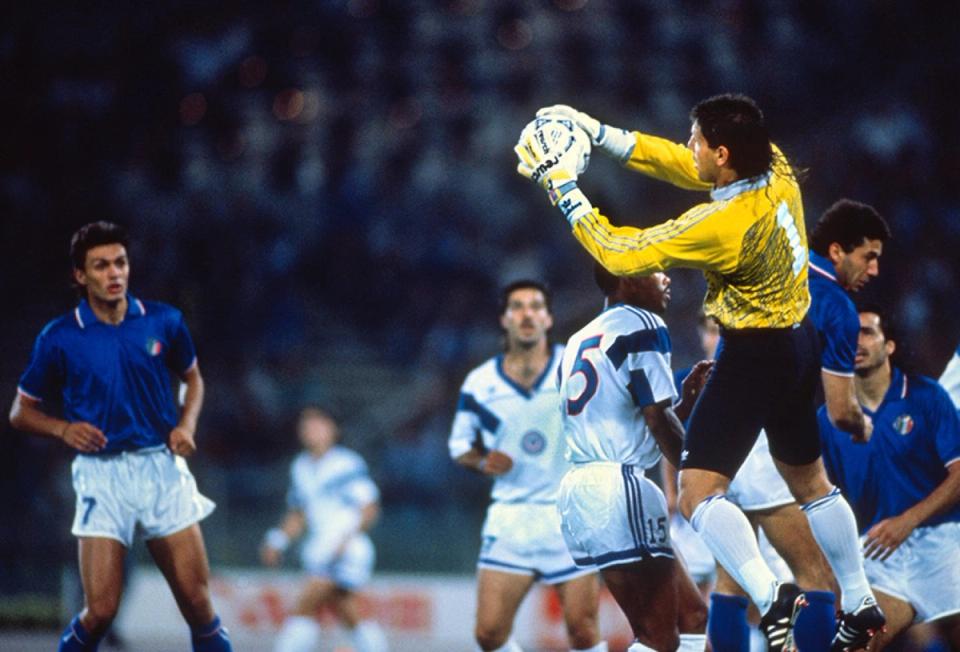
“It’s interesting to hear him say that he was thinking that far ahead,” Meola (above) said. “What right did we have to think ahead? That guy just a sort of genius in the way that he thinks.”
Italia ‘90 could be viewed as tough love. The players struggled but learned much about themselves and international soccer as a career launching pad.
"Everything was so new for us," Ramos said. “I signed a contract in Spain (Figueres) right after that. It was a steppingstone to the rest of my career."
Those 20 minutes opened up an opportunity for Bliss to embark on a professional outdoor career with Energie Cottbus (former East Germany).
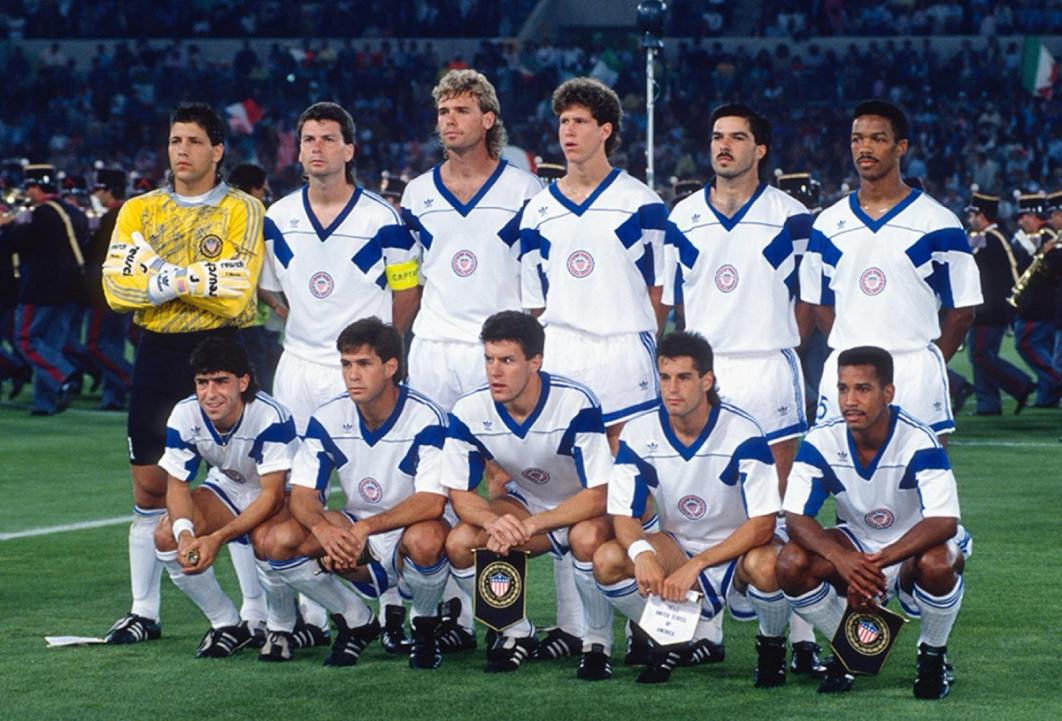
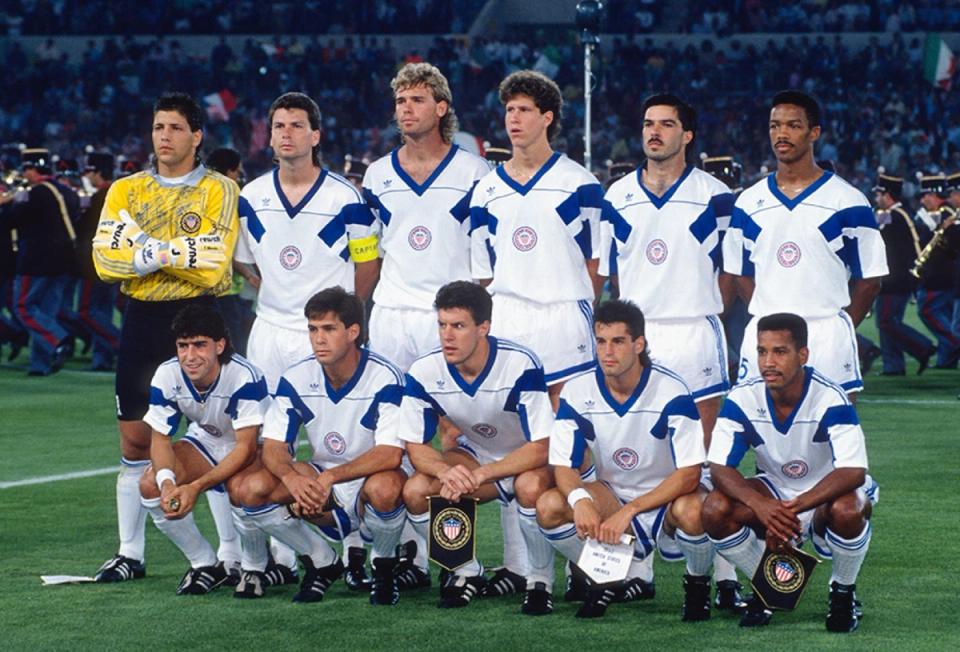
"The only reason I got there was because I was on that World Cup team and they had seen that player and said, 'Ok, they can't be that bad. We had seen the USA play against Italy and they held them to a 1-0 game and they played well,'“he said. “Except, I didn't play in the game."
It was even a learning experience for Gansler.
"I always felt that I was reasonably confident. I allowed substantial room to be humble because there's always things to be learned,” he said. “I learned how much quicker everything is at that level and it starts with the thinking. Mike Windischmann certainly was an individual who demonstrated that the fastest thing on the field is your brain. That was Michael’s biggest asset. It’s not the ball, it's not foot speed. It's your brain. I had seen film clips about it, but to experience it up close we just have to more intelligent about the way we prepare to help these guys to think faster and better in a variety of ways."







